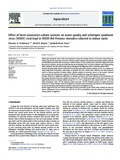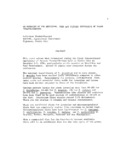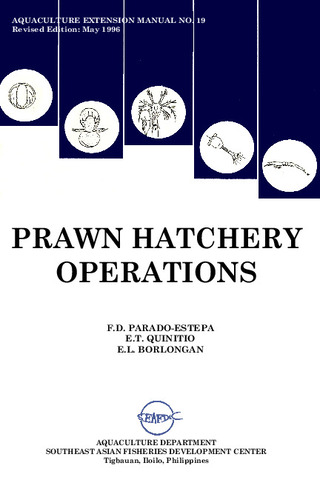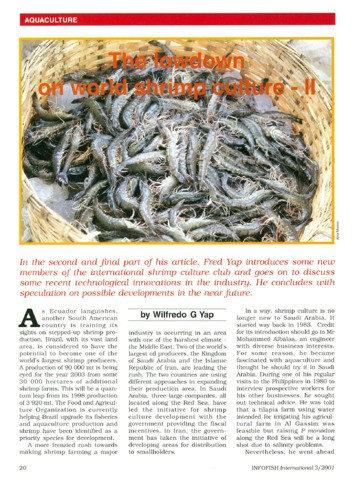Effect of three innovative culture systems on water quality and whitespot syndrome virus (WSSV) viral load in WSSV-fed Penaeus monodon cultured in indoor tanks
Share
Abstract
White spot syndrome virus is the most important among the shrimp diseases. It has been devastating the shrimp industry for more than 3 decades. Previous studies reported that greater percentage of yellow colonies on thiosulfate citrate bile salt sucrose agar (yellow vibrios) in the rearing water, abundant supply of natural food such as Chlorella, and the use of the greenwater technology (GW) are some ecological ways of preventing WSSV outbreak. The aim of this study was to investigate the efficiency of the 3 systems against WSSV.
Shrimp, experimentally infected with WSSV by feeding with WSSV positive shrimp carcass, was cultured in tanks using three treatments: with tilapia to simulate the GW, seeded with Chlorella, and with molasses added to enhance growth of yellow vibrios. Shrimp cultured in seawater served as the control. Survival was recorded and shrimp were analyzed for WSSV quantification using qPCR upon termination.
Analysis showed no significant differences in shrimp survival at 120 h post infection in all treatments and the control. However, from the original viral load of 1.40 × 101 WSSV/mg sample, WSSV decreased and was significantly lowest in shrimp cultured using GW (7.0 × 100), compared to the control (4.82 × 105) and the other treatments (3.66 × 105 for molasses added and 4.64 × 105 for Chlorella seeded) in which viral load increased 4–5 times. Shrimp survival was highest in Chlorella seeded treatment and lowest in GW. Nitrogenous waste concentrations were lowest in molasses added water and highest in GW.
Results suggest that the GW culture technology provides protection against WSSV while addition of molasses lowers nitrogenous waste concentration. The use of GW in combination with the addition of molasses for shrimp culture is suggested.
Suggested Citation
Tendencia, E., Bosma, R. H., & Sorio, L. R. (2012). Effect of three innovative culture systems on water quality and whitespot syndrome virus (WSSV) viral load in WSSV-fed Penaeus monodon cultured in indoor tanks. Aquaculture , 350-353, 169-174. https://doi.org/10.1016/j.aquaculture.2012.04.001
Taxonomic term
Collections
- AQD Journal Articles [1249]
Related items
Showing items related by title, author, creator and subject.
-
An overview of the nutrition, feed and feeding techniques of prawn penaeid/shrimps
Piedad-Pascual, Felicitas (Philippine Council for Aquatic and Marine Research and Development, 1989)This paper echoes what transpired during the first International Conference of Penaeid Prawns/Shrimps held in Iloilo City in December 4-7, 1984, particularly on the Nutrition nd Feed Development. Around 25 papers were ... -
Prawn hatchery operations
Parado-Estepa, Fe D.; Quinitio, Emilia T.; Borlongan, Emeterio L. (Aquaculture Department, Southeast Asian Fisheries Development Center, 1996-05)The manual, an updated version of the 1984 SEAFDEC/AQD manual, presents the underlying principles and step-by-step instructions of prawn larval and post-larval rearing. The techniques described are not only applicable to ... -
The lowdown on world shrimp culture - II
Yap, Wilfredo G. (INFOFISH, 2001)This paper introduces some new members of the international shrimp culture club and goes on to discuss some recent technological innovations in the industry, particularly the polyculture of tilapia (mainly Oreochromis ...




